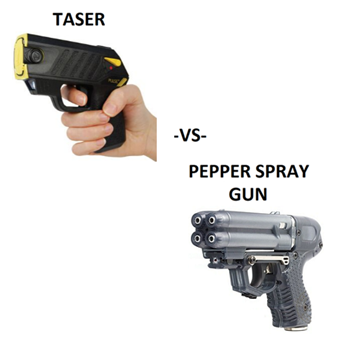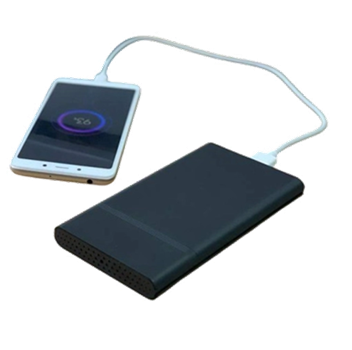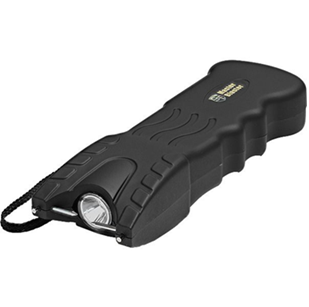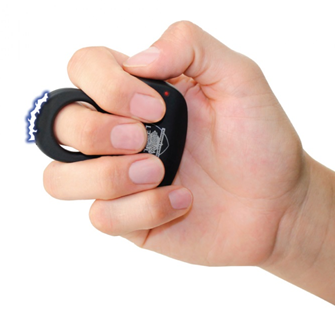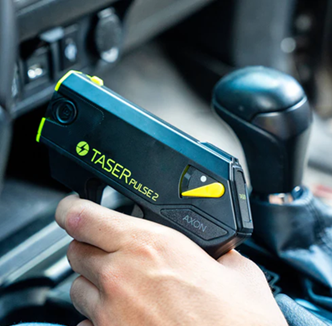Use a Stun Guns for Venomous Bites: Myth or Danger?
 In survival situations, people sometimes turn to unconventional methods when faced with venomous bites or stings, hoping for fast relief. One popularized yet controversial approach involves using a stun gun or electric shock to neutralize venom. Proponents argue that the shock can break down venom proteins and relieve pain. However, there’s no scientific backing for these claims, and using a stun gun on a venomous bite can actually increase risks.
In survival situations, people sometimes turn to unconventional methods when faced with venomous bites or stings, hoping for fast relief. One popularized yet controversial approach involves using a stun gun or electric shock to neutralize venom. Proponents argue that the shock can break down venom proteins and relieve pain. However, there’s no scientific backing for these claims, and using a stun gun on a venomous bite can actually increase risks.
This article explores the origins of this myth, examines the science (or lack thereof) behind it, highlights potential dangers, and offers safer, medically endorsed alternatives.
1. The Origin of the Stun Gun Myth
The idea of using electricity to treat venomous bites gained some popularity after anecdotal accounts and reports emerged in the 1980s and 1990s. Various survivalists and outdoor enthusiasts claimed that a small shock from a stun gun relieved pain or neutralized venom. This technique was rumored to have been tried on jellyfish stings, scorpion stings, and even snake bites.
Although these stories spread, no reputable medical studies confirmed the method’s effectiveness. In fact, the American Medical Association, venom experts, and toxicologists have all debunked the idea as ineffective and potentially dangerous. The survival community, however, sometimes still shares it as an “emergency trick.”
2. Understanding How Stun Guns Work
A stun gun is a self-defense tool designed to deliver a high-voltage, low-amperage shock. When used in self-defense, the electric shock causes pain and temporarily immobilizes muscles by disrupting the nervous system.
- Voltage and Amperage: Stun guns generally range from 10,000 to 50,000 volts. They deliver a shock strong enough to cause pain without penetrating deep into tissue or affecting the heart.
- Purpose: Stun guns are not designed for medical use. Their purpose is to incapacitate an attacker briefly, not to treat or neutralize poisons.
When applied to a venomous bite, a stun gun could theoretically break down venom proteins, but there’s no evidence that this happens in real-life cases. The voltage doesn’t penetrate deeply enough, and it could instead damage the skin and underlying tissues.
3. Why Stun Guns Don’t Work for Venomous Bites
Venom Chemistry: Venoms are complex mixtures of proteins, peptides, and enzymes designed to disrupt biological systems. Each type of venom has different effects:
- Snake venom typically contains toxins that damage cells, tissues, or the nervous system.
- Jellyfish venom can cause severe pain and systemic reactions.
- Scorpion venom generally targets the nervous system, leading to pain and potentially serious symptoms.
Electrical shock may affect protein structures in a laboratory setting, but this doesn’t translate to real-world effects in the body. Venom injected deep into tissue requires specific treatment, such as antivenoms and supportive care, rather than surface-level shock.
4. Scientific Studies and Medical Consensus
Research has consistently shown that electric shocks do not neutralize venom or reduce symptoms in snake bites, jellyfish stings, or scorpion stings. Here are a few key points from medical studies and guidelines:
- Lack of Clinical Support: Clinical research has found no benefit to using electric shocks for venom treatment. In some cases, shocks worsened symptoms, likely by promoting venom spread in the bloodstream.
- Potential Harm: Applying a stun gun to a venomous bite can cause burns, tissue damage, and may lead to infections.
- Medical Consensus: Organizations like the American Medical Association, the American Red Cross, and the Wilderness Medical Society do not endorse using electrical shocks for venomous bites. These organizations stress the importance of proven first-aid methods and immediate medical attention.
5. Risks of Using a Stun Gun on Venomous Bites and Stings
Attempting to treat a bite or sting with a stun gun presents multiple risks:
- Tissue Damage: Stun guns can burn skin, damage nerves, and increase swelling at the site of a bite.
- Delayed Medical Care: Relying on a stun gun may delay access to proper care, allowing venom to spread and worsen symptoms.
- Increased Venom Spread: High voltage could potentially increase blood flow and promote venom movement in the body, intensifying the effects of the bite.
In severe cases, relying on an ineffective method can result in life-threatening complications if timely medical care isn’t sought.
6. Safer Alternatives for Treating Venomous Bites and Stings
Here’s a breakdown of the appropriate response for each type of venomous encounter:
A. Snake Bites
- First Aid: Immobilize the affected limb, keep it below heart level, and stay calm to slow venom spread.
- Avoid: Applying ice, tourniquets, or making incisions to “suck out” venom, as these methods can worsen tissue damage.
- Seek Help: Antivenom is the only effective treatment for many snake bites, and it’s essential to reach a medical facility as soon as possible.
B. Jellyfish Stings
- First Aid: Rinse with vinegar or salt water to neutralize nematocysts (the stinging cells). Use tweezers to carefully remove tentacles.
- Avoid: Freshwater or alcohol, as these can cause stinging cells to release more venom.
- Pain Management: Submerge the area in hot water (around 113°F or 45°C) if possible. Seek medical help for severe reactions.
C. Scorpion Stings
- First Aid: Clean the area with soap and water. Apply a cold compress for pain and swelling.
- Seek Help: While most scorpion stings are not life-threatening, stings from dangerous species require antivenom, especially for children and those with severe symptoms.
7. The Psychology Behind the Stun Gun Myth
Myths around unconventional treatments often persist because of psychological factors:
- Anecdotal Success Stories: Positive stories from individuals who used a stun gun and didn’t experience serious symptoms may spread as evidence. However, these cases are not proof of effectiveness.
- Survival Urgency: In survival situations, people may try anything that seems remotely effective, especially when no immediate medical help is available.
- Misinterpretation of Results: If symptoms improve after applying a stun gun, it may be coincidence or placebo effect. The symptoms might have improved naturally, but the stun gun is mistakenly credited.
8. Myth-Busting: What Science Tells Us About Electrical Shock and Venom
Scientists have examined various home remedies and myths around treating venomous bites, and here’s what research concludes:
- Electricity and Protein Denaturation: While high temperatures or electricity can denature proteins in a lab, this effect doesn’t apply to venom proteins in the human body. Venom’s biochemical structure is complex, and the required voltage to break it down would likely damage human tissues first.
- Venom Inactivation: Antivenoms are the only medically proven way to neutralize certain venoms in the body, and they are specifically designed to bind to venom molecules and prevent them from interacting with human cells.
9. Conclusion: What to Remember About Stun Guns and Venomous Bites
Using a stun gun on a venomous bite or sting is not only ineffective but also potentially dangerous. Modern medical guidelines stress the importance of proven first aid techniques, remaining calm, and seeking prompt medical attention. Here’s a summary of what to remember:
- Avoid Using Electrical Shocks: There’s no scientific backing for using electricity to treat venomous bites or stings.
- Follow Proven First Aid: Clean the wound, apply cold or warm compresses as appropriate, and immobilize the area.
- Seek Medical Care: Venomous bites and stings, especially from dangerous species, require medical evaluation and possibly antivenom.
In survival situations, the best defense is knowledge. Understanding effective first aid techniques and debunking myths like using stun guns for venomous bites can save lives.
Company Info
Customer Service
Product Information
- TASER® and Stun Devices Regulations by State
- TASER® Safe Escape Product Replacement Guarantee
- TASER® Comparison Chart
- TASER® User Manuals
- TASER® Warranty Info
- Byrna Product Catalog
- PepperBall Manuals & Spec Sheets
- Pepper Spray Laws
- Air Gun Laws
- States that Restrict Automatic and Butterfly Knives
- Our Print Catalog



























